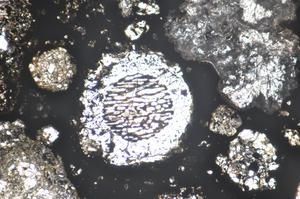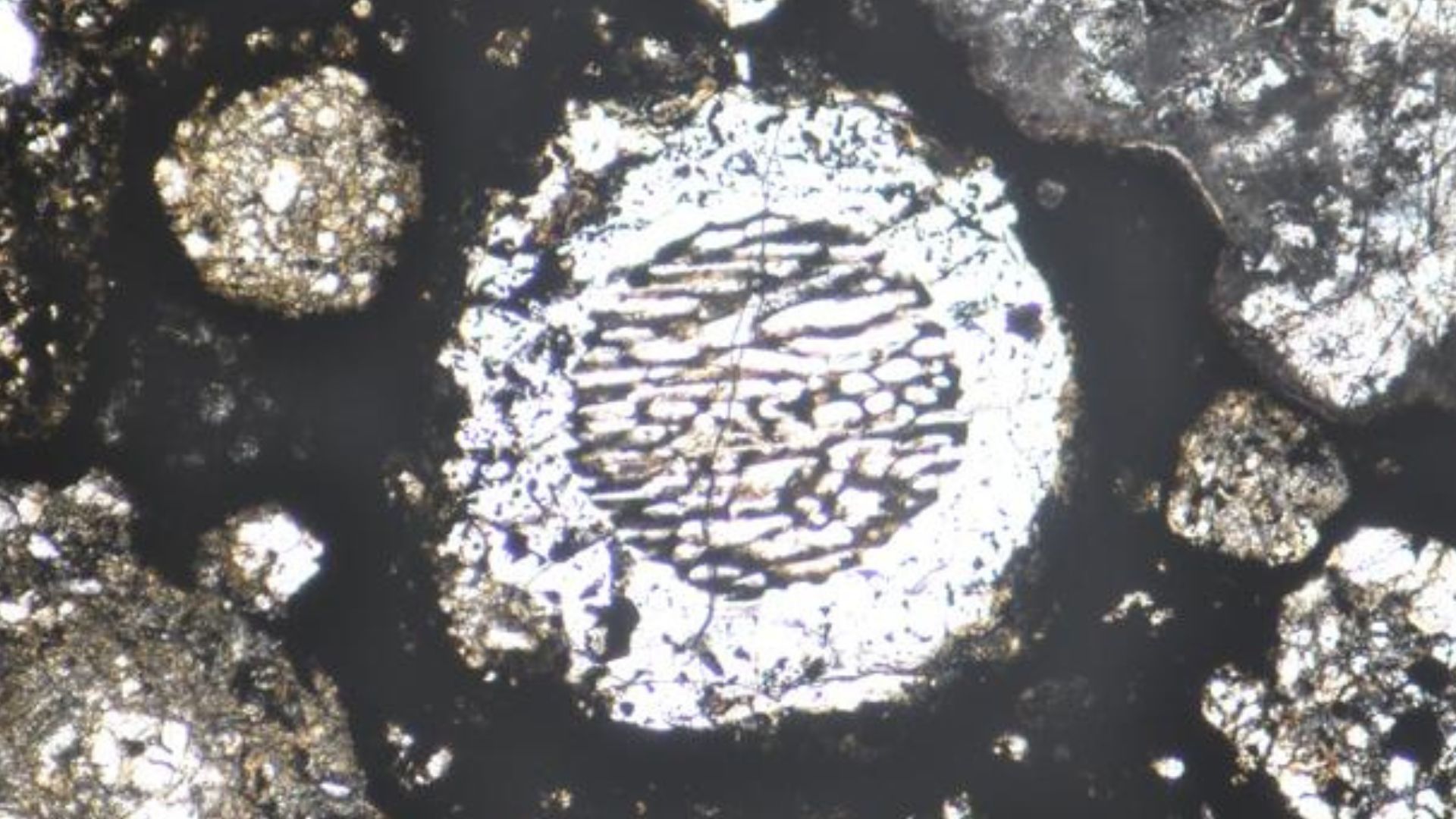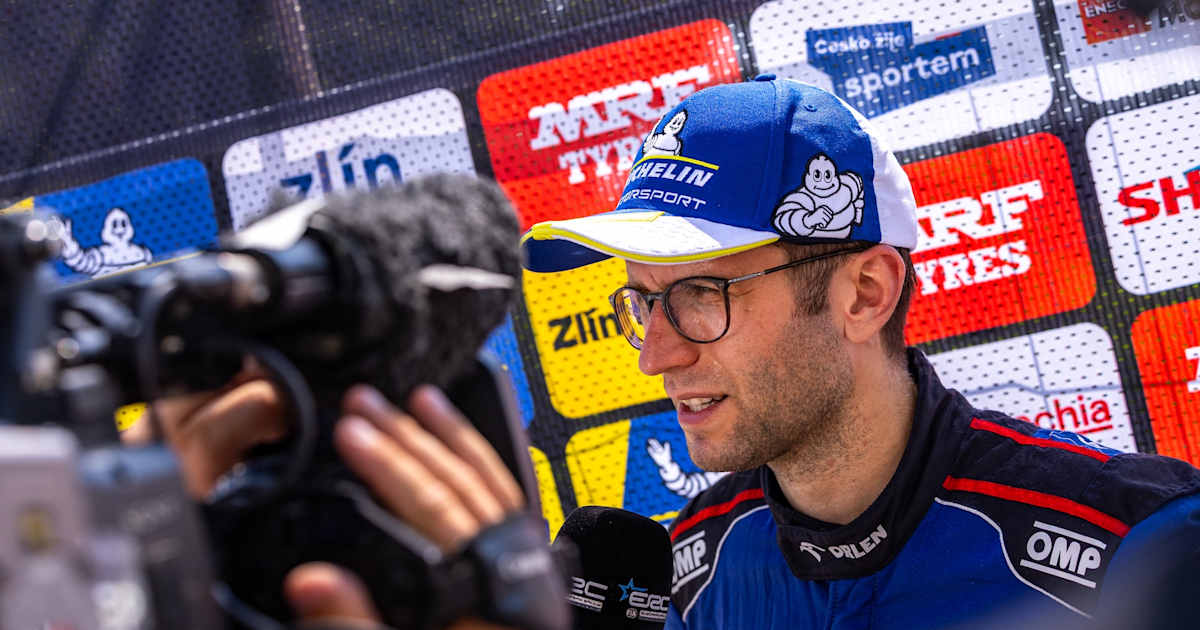image:
Round chondrules visible in a thin section of the Allende meteorite under microscopic view. Credit: Akira Miyake, Kyoto University
view more
Credit: Akira Miyake, Kyoto University
Four and a half billion years ago Jupiter rapidly grew to its massive size. Its powerful gravitational pull disrupted the orbits of small rocky and icy bodies similar to modern asteroids and comets, called planetesimals. This caused them to smash into each other at such high speeds that the rocks and dust they contained melted on impact and created floating molten rock droplets, or chondrules, that we find preserved in meteorites today.
Now, researchers at Nagoya University in Japan and the Italian National Institute for Astrophysics (INAF) have for the first time determined how these droplets formed and accurately dated the formation of Jupiter based on their findings. Their study, published in Scientific Reports, shows how the characteristics of chondrules, particularly their sizes and the rate at which they cooled in space, are determined by the water contained in the impacting planetesimals. This explains what we observe in meteorite samples and proves that chondrule formation was a result of planet formation.
Time capsules from 4.6 billion years ago
Chondrules, small spheres approximately 0.1-2 millimeters wide, were incorporated into asteroids as the solar system formed. Billions of years later, pieces of these asteroids would break off and fall to Earth as meteorites. How chondrules came to have their round shape has puzzled scientists for decades.
“When planetesimals collided with each other, water instantly vaporized into expanding steam. This acted like tiny explosions and broke apart the molten silicate rock into the tiny droplets we see in meteorites today,” co-lead author Professor Sin-iti Sirono from Nagoya University’s Graduate School of Earth and Environmental Sciences explained.
“Previous formation theories couldn’t explain chondrule characteristics without requiring very specific conditions, while this model requires conditions that naturally occurred in the early solar system when Jupiter was born.”
The researchers developed computer simulations of Jupiter’s growth and tracked how its gravity caused high-speed collisions between rocky and water-rich planetesimals in the early solar system.
“We compared the characteristics and abundance of simulated chondrules to meteorite data and found that the model spontaneously generated realistic chondrules. The model also shows that chondrule production coincides with Jupiter’s intense accumulation of nebular gas to reach its massive size. As meteorite data tell us that peak chondrule formation took place 1.8 million years after the solar system began, this is also the time at which Jupiter was born,” Dr. Diego Turrini, co-lead author and senior researcher at the Italian National Institute for Astrophysics (INAF) said.
A new way to date when planets form
This study provides a clearer picture of how our solar system formed. However, the production of chondrules started by Jupiter’s formation is too brief to explain why we find chondrules of many different ages in meteorites. The most likely explanation is that other giant planets like Saturn also triggered chondrule formation when they were born.
By studying chondrules of different ages, scientists can trace the birth order of the planets and understand how our solar system developed over time. The research also suggests that these violent planet formation processes may occur around other stars and offers insights into how other planetary systems developed.
The study, “Chondrule formation by collisions of planetesimals containing volatiles triggered by Jupiter’s formation,” was published in the journal Scientific Reports, on August 25, 2025, at DOI: 10.1038/s41598-025-12643-x.
Funding information:
This work was supported by JSPS KAKENHI Grant Number 25K07383, by the Italian Space Agency through ASI-INAF contract 2016-23-H.0 and 2021-5-HH.0 and by the European Research Council via the Horizon 2020 Framework Programme ERC Synergy “ECOGAL” Project GA-855130.
Journal
Scientific Reports
Method of Research
Computational simulation/modeling
Article Title
Chondrule formation by collisions of planetesimals containing volatiles triggered by Jupiter’s formation
Article Publication Date
25-Aug-2025
Disclaimer: AAAS and EurekAlert! are not responsible for the accuracy of news releases posted to EurekAlert! by contributing institutions or for the use of any information through the EurekAlert system.









